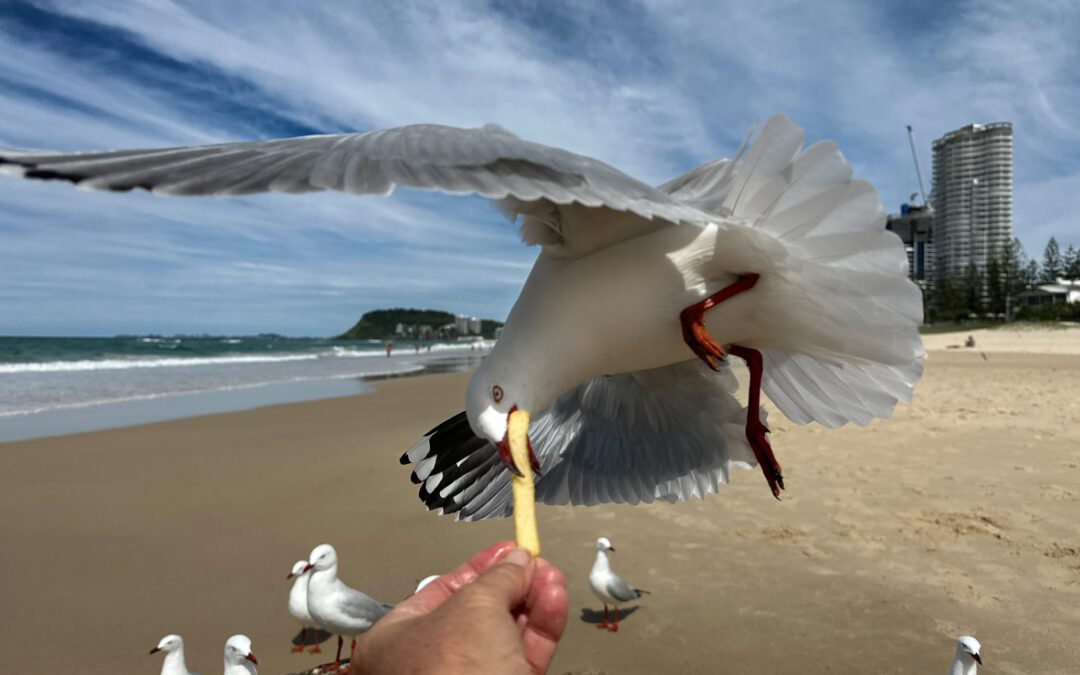
by Pigeon Patrol | Oct 15, 2024 | Bird Deterrent Products, Bird Law, Bird Netting, Bird Spikes, Columbidae
The U.K. considered training pigeons to deliver weapons of mass destruction but changed its mind, government files show.
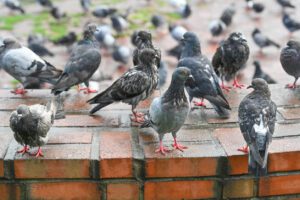
City pigeons
It considered using the birds to deliver biological weapons after World War II but decided the birds had outlived their usefulness in battle.
Homing pigeons carried vital messages in wartime, and the Pigeon Policy Committee of the day discussed training them to undertake ever more daring tasks.
“We can now train pigeons to ‘home’ to any object on the ground when air-released in the vicinity… Bacteria might be delivered accurately to a target by this means,” head of the Air Ministry Pigeon Section Lea Rayner said in a 1945 report.
“With the latest developments of explosives and bacterial science I suggest that this possibility should be closely investigated and watched.
“A thousand pigeons, each with a two ounce explosive capsule, landed at intervals on a specific target might be a seriously inconvenient surprise.”
But other committee members did not share Rayner’s enthusiasm and in 1948 the armed services said they had no further interest in pigeons.
The secret services, however, thought anti-British forces would continue to communicate with each other via pigeons and asked a civilian pigeon fancier to keep 100 birds for MI5 to use to prepare countermeasures.
But they abandoned that scheme in 1950.
The U.K. used about 250,000 pigeons to carry messages in World War II and 32 of the birds received the Dickin Medal, the highest award of valour for animals.
The birds were also used for aerial surveillance. At the beginning of the 20th century Bavaria’s pigeon fleet flew over Europe with cameras attached to their bodies that took a series of timed shots.
Pigeon Patrol Products & Services is the leading manufacturer and distributor of bird deterrent (control) products in Canada. Pigeon Patrol products have solved pest bird problems in industrial, commercial, and residential settings since 2000, by using safe and humane bird deterrents with only bird and animal -friendly solutions. At Pigeon Patrol, we manufacture and offer a variety of bird deterrents, ranging from Ultra-flex Bird Spikes with UV protection, Bird Netting, 4-S Bird Gel and the best Ultrasonic and audible sound devices on the market today.
Canada’s top wholesaler for bird deterrent products for twelve consecutive years.
Contact us at 1- 877– 4– NO-BIRD, (604) 585-9279 or visit our website at https://www.pigeonpatrol.ca/
Bird Gone, Pigeon Gone, Pigeon problems, pigeon spikes, 1-877-4NO-BIRD, 4-S Gel, Bird Control, Pigeon Control, bird repellent, Bird Spikes, sonic bird repellent, stainless steel bird spikes, bird spikes Vancouver, Ultra Sonic Bird Control, Bird Netting, Plastic Bird Spikes, Canada bird spike deterrents, Pigeon Pests, B Gone Pigeon, Pigeon Patrol, pest controller, pest control operator, pest control technician, Pigeon Control Products, humane pigeon spikes, pigeon deterrents, pigeon traps, Pigeon repellents, Sound & Laser Deterrents, wildlife control, raccoon, skunk, squirrel deterrent, De-Fence Spikes, Dragons Den, Pigeon, Pigeon Patrol, Pigeons Roosting, Vancouver Pigeon Control, Bird Spikes, Bird Control, Bird Deterrent, Pigeon Deterrent, Surrey Pigeon Control, Pest, Seagull deterrent Vancouver Pigeon Blog, Birds Inside Home De-fence, Pigeon Nesting, Bird Droppings, Pigeon Dropping, woodpecker control, Keep The Birds Away, Birds/rats, seagull, pigeon, woodpecker, dove, sparrow, pidgeon control, pidgeon problem, pidgeon control, flying rats, pigeon Problems, bird netting, bird gel, bird spray, bird nails, bird guard, Pigeon control, Bird deterrents, Pigeon deterrents, Bird control, solutions, Pigeon prevention, Pigeon repellent, Bird proofing, Pest bird management, Pigeon spikes, Bird netting, Humane bird control, Bird exclusion, Urban bird control, Anti-roosting devices, Pigeon removal, Bird barriers
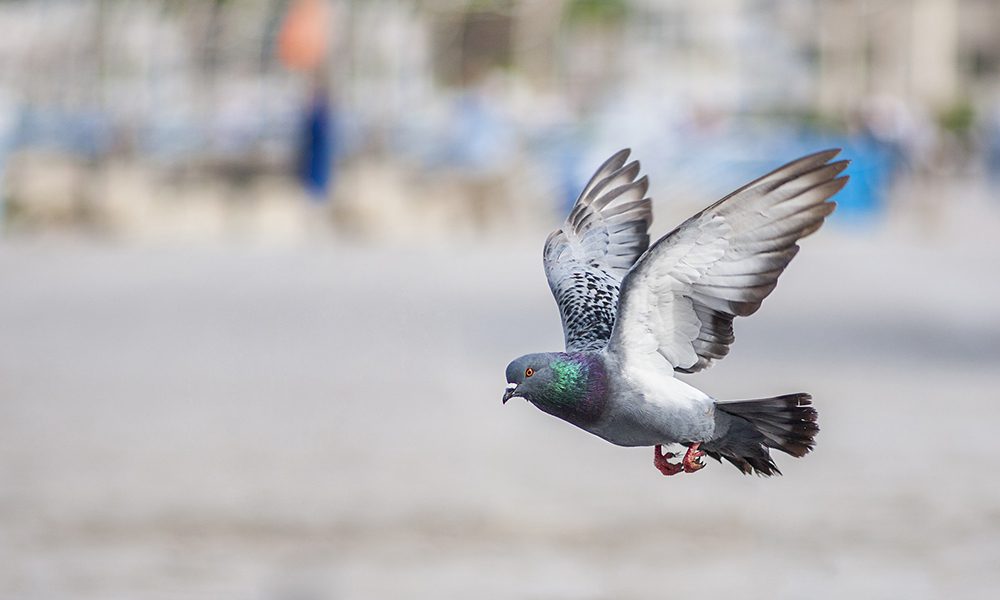
by Pigeon Patrol | Oct 15, 2024 | Bird Netting, Bird Spike, Pigeon Patrol's Services, Pigeon Predators, Pigeon Spikes
Ah, the one-legged pigeon of Ryerson — a famous figure on campus. Students and regular citizens alike fondly regale each other with stories of the deformed bird.
It’s been brought to my attention that the pigeon has gone missing. Is she dead? Was she eaten? Did she just pick up and leave, sick of all the attention she was getting at Ryerson?
Fret no more, my friends. I know the truth. Our one-legged pigeon is less of a circus freak and more of a noble revolutionary than any of us expected.
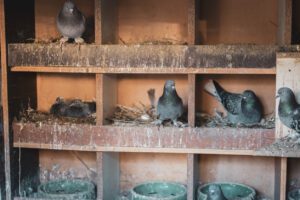
Pigeons and their chicks sitting on perches in farm countryside
The year was 2004. Facebook had just launched and everyone had flip phones. Outside the realm of human interest, however, a revolution was brewing.
The Pigeons’ Movement was one that had a substantial following, as all pigeons agreed that their resemblance to seagulls was systematically ruining their lives. They were sick and tired of being mistaken for the evil birds, who had garnered a bad reputation among the humans. As a result, a group of passionate individuals decided to take action.
Our one-legged pigeon was in the midst of a sit-in on the Kerr Hall Quad and was a leading figure of the Pigeons’ Movement. She was giving a speech (telepathically, of course) when an idea flashed across her mind. Why not make it clear that we are a force to be reckoned with?
As the birds communicated, it was decided that they would amputate a leg to demonstrate their seriousness. They wanted to be seen as unique, dammit. To them, this was the only solution. I won’t go into the grisly details of how exactly it was done, but I will say that it included some plastic knives and a lot of effort.
The movement yielded minimal results and soon, all of the dismembered pigeons lost touch. Of course, most of them died immediately, as they were unable to fend for themselves. Actually, all but one was deceased. She is the mastermind behind the imprudent plan. She is (you guessed it) the one-legged pigeon of Ryerson.
For years, she wandered around the campus, hoping to run into one of her old friends from her old life. Was the movement still kicking? Did she cut off her leg for no reason?
While humans laughed and took pictures of her, she cried. All of this suffering, because she wanted to fight the good fight.
Now, the question of where she disappeared to. The infamous one-legged pigeon is not, in fact, dead. She was discovered by some young activists, who then brought her underground to speak to a gathering of pigeons who wanted to revive the movement. She is respected there, and she is hopeful.
Expect to hear about the second wave of the Pigeons’ Movement. Expect to see some more deformed feathery friends hopping about. Let it be known that it all started with the one-legged pigeon of Ryerson.
Pigeon Patrol Products & Services is the leading manufacturer and distributor of bird deterrent (control) products in Canada. Pigeon Patrol products have solved pest bird problems in industrial, commercial, and residential settings since 2000, by using safe and humane bird deterrents with only bird and animal -friendly solutions. At Pigeon Patrol, we manufacture and offer a variety of bird deterrents, ranging from Ultra-flex Bird Spikes with UV protection, Bird Netting, 4-S Bird Gel and the best Ultrasonic and audible sound devices on the market today.
Canada’s top wholesaler for bird deterrent products for twelve consecutive years.
Contact us at 1- 877– 4– NO-BIRD, (604) 585-9279 or visit our website at https://www.pigeonpatrol.ca/
Bird Gone, Pigeon Gone, Pigeon problems, pigeon spikes, 1-877-4NO-BIRD, 4-S Gel, Bird Control, Pigeon Control, bird repellent, Bird Spikes, sonic bird repellent, stainless steel bird spikes, bird spikes Vancouver, Ultra Sonic Bird Control, Bird Netting, Plastic Bird Spikes, Canada bird spike deterrents, Pigeon Pests, B Gone Pigeon, Pigeon Patrol, pest controller, pest control operator, pest control technician, Pigeon Control Products, humane pigeon spikes, pigeon deterrents, pigeon traps, Pigeon repellents, Sound & Laser Deterrents, wildlife control, raccoon, skunk, squirrel deterrent, De-Fence Spikes, Dragons Den, Pigeon, Pigeon Patrol, Pigeons Roosting, Vancouver Pigeon Control, Bird Spikes, Bird Control, Bird Deterrent, Pigeon Deterrent, Surrey Pigeon Control, Pest, Seagull deterrent Vancouver Pigeon Blog, Birds Inside Home De-fence, Pigeon Nesting, Bird Droppings, Pigeon Dropping, woodpecker control, Keep The Birds Away, Birds/rats, seagull, pigeon, woodpecker, dove, sparrow, pidgeon control, pidgeon problem, pidgeon control, flying rats, pigeon Problems, bird netting, bird gel, bird spray, bird nails, bird guard, Pigeon control, Bird deterrents, Pigeon deterrents, Bird control, solutions, Pigeon prevention, Pigeon repellent, Bird proofing, Pest bird management, Pigeon spikes, Bird netting, Humane bird control, Bird exclusion, Urban bird control, Anti-roosting devices, Pigeon removal, Bird barriers
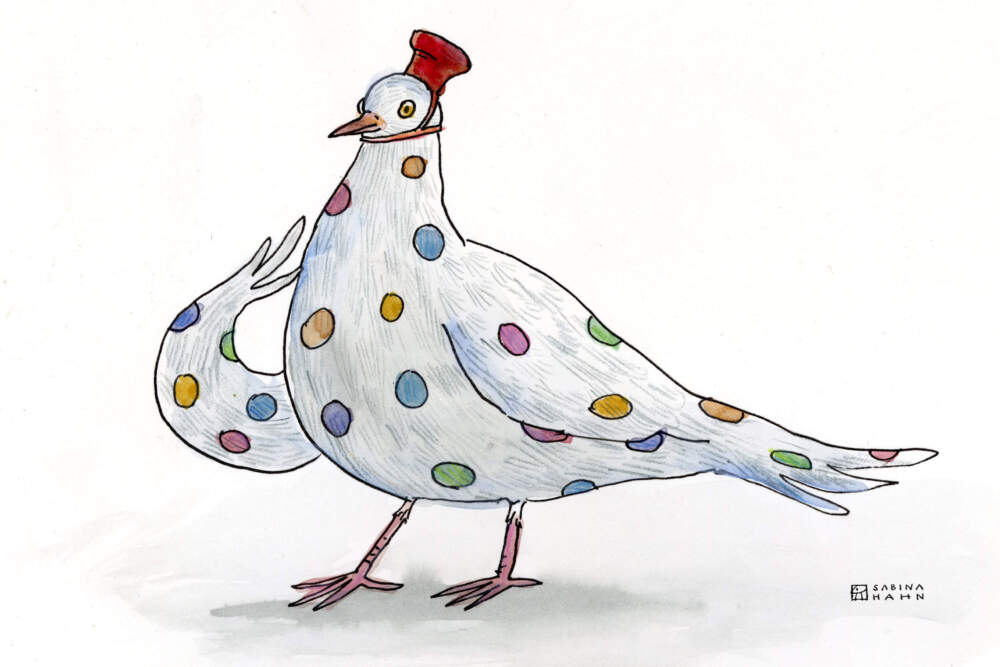
by Pigeon Patrol | Oct 15, 2024 | Animal Deterrent Products, Bird Deterrent Products, Bird Law, Bird Netting, Bird Spikes
Mayor of London Ken Livingstone was unexpectedly “ruffled” on his trip to the US, by protesters opposed to his plan to reduce the number of pigeons in Trafalgar Square.
He was on a fact-finding mission to the US, but had not expected to be doused in water over an issue related to London’s most famous square.Mr Livingstone has been criticised after refusing to renew the licence of the last bird feed vendor in Trafalgar Square. Andrew Butler, a spokesman for the pressure group People for the Ethical Treatment of Animals (PETA) told how activists doused Mr Livingstone with a pitcher of water during a news conference in Washington DC on Thursday.
A protester shouted: “Your plan to poison pigeons is all wet. Mayor Livingstone starves pigeons to death.”
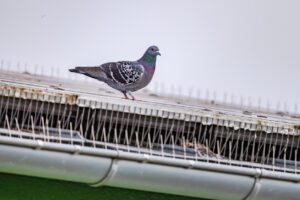
Pigeon on a roof with solar panels with pigeon spikes to repel pigeons, Darmstadt, Germany
Bird feed seller Bernard Rayner has until Friday to give up his job, after which the Greater London Authority will implement a one-month phased withdrawal of feed from the capital’s famous landmark.Mr Rayner had traded on a temporary licence since October after a High Court appeal against an earlier move by Mr Livingstone to target the pigeons.
At that time, Labour MP Tony Banks tabled a Commons’ motion in a bid to save the “gentle London pigeon”. Mr Butler said that people in the UK may be surprised about the trans-Atlantic interest shown in the issue – but the US activists feel strongly about the fate of the birds. He said: “This isn’t Hawaii. It’s freezing-cold concrete-covered London. There are no luscious fruit trees for the birds to flit over to. The baby and elderly pigeons have nowhere else to seek food.
“They’ll starve. What’s he going to introduce next? Bear-baiting? He is waging war against the symbol of peace. Pigeons are rock doves, and Ken needs to extend an olive branch.” The GLA plans to clean up the mess caused by pigeon droppings and pedestrianise the upper part of the square to make way for more cultural pursuits for visitors.
But Dr Jayne Cuthbert, a research fellow at Kingston University who has advised the government on pigeons, confirmed PETA’s fears that withdrawing the food supply will result in the deaths of thousands of the birds.
She said: “The basic law of ecology is that there will only be as many birds in any area as there is enough food to feed them. “The Trafalgar Square pigeons will therefore not be able to fly off elsewhere because there will be no food available.” The number of pigeons in British towns and cities is estimated to have doubled in the past five years.
Mr Livingstone spent the earlier part of the week in New York to find out about its public transport and urban regeneration schemes. He is now spending two days in Washington as a guest at the annual conference of US mayors
Pigeon Patrol Products & Services is the leading manufacturer and distributor of bird deterrent (control) products in Canada. Pigeon Patrol products have solved pest bird problems in industrial, commercial, and residential settings since 2000, by using safe and humane bird deterrents with only bird and animal -friendly solutions. At Pigeon Patrol, we manufacture and offer a variety of bird deterrents, ranging from Ultra-flex Bird Spikes with UV protection, Bird Netting, 4-S Bird Gel and the best Ultrasonic and audible sound devices on the market today.
Canada’s top wholesaler for bird deterrent products for twelve consecutive years.
Contact us at 1- 877– 4– NO-BIRD, (604) 585-9279 or visit our website at https://www.pigeonpatrol.ca/
Bird Gone, Pigeon Gone, Pigeon problems, pigeon spikes, 1-877-4NO-BIRD, 4-S Gel, Bird Control, Pigeon Control, bird repellent, Bird Spikes, sonic bird repellent, stainless steel bird spikes, bird spikes Vancouver, Ultra Sonic Bird Control, Bird Netting, Plastic Bird Spikes, Canada bird spike deterrents, Pigeon Pests, B Gone Pigeon, Pigeon Patrol, pest controller, pest control operator, pest control technician, Pigeon Control Products, humane pigeon spikes, pigeon deterrents, pigeon traps, Pigeon repellents, Sound & Laser Deterrents, wildlife control, raccoon, skunk, squirrel deterrent, De-Fence Spikes, Dragons Den, Pigeon, Pigeon Patrol, Pigeons Roosting, Vancouver Pigeon Control, Bird Spikes, Bird Control, Bird Deterrent, Pigeon Deterrent, Surrey Pigeon Control, Pest, Seagull deterrent Vancouver Pigeon Blog, Birds Inside Home De-fence, Pigeon Nesting, Bird Droppings, Pigeon Dropping, woodpecker control, Keep The Birds Away, Birds/rats, seagull, pigeon, woodpecker, dove, sparrow, pidgeon control, pidgeon problem, pidgeon control, flying rats, pigeon Problems, bird netting, bird gel, bird spray, bird nails, bird guard, Pigeon control, Bird deterrents, Pigeon deterrents, Bird control, solutions, Pigeon prevention, Pigeon repellent, Bird proofing, Pest bird management, Pigeon spikes, Bird netting, Humane bird control, Bird exclusion, Urban bird control, Anti-roosting devices, Pigeon removal, Bird barriers
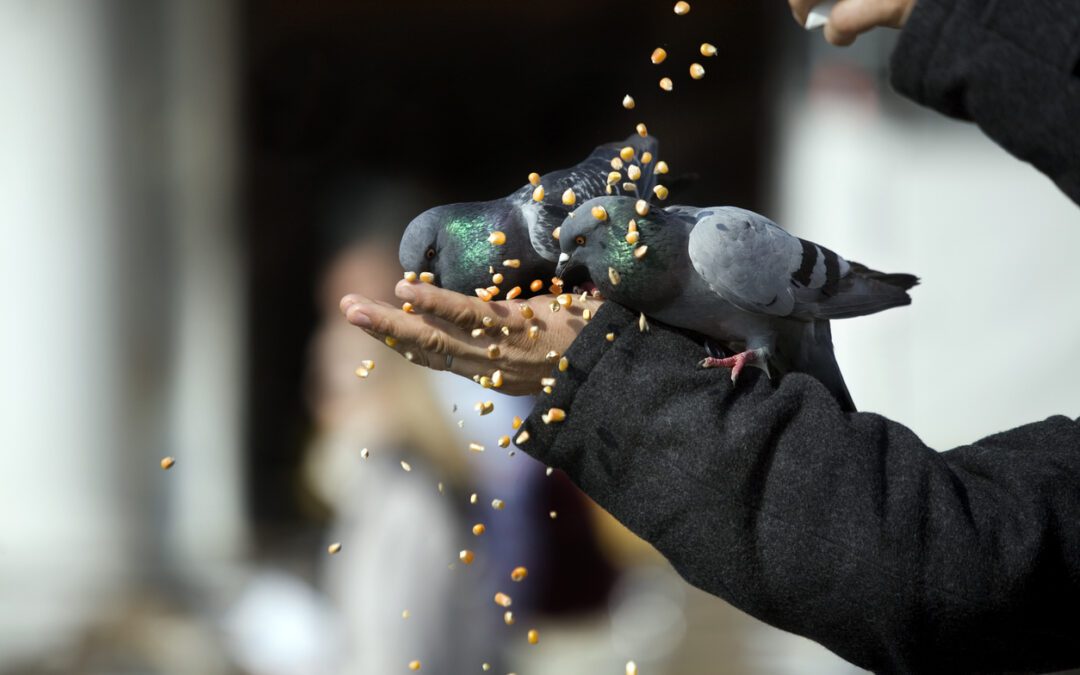
by Pigeon Patrol | Oct 15, 2024 | Bird Deterrent Products, Bird Law, Bird Netting, Bird Spikes, Columbidae
Nearly three-quarters of Big Apple kids may have been exposed to a pigeon-poop fungus that can cause vomiting, fever and other illnesses, a new study revealed yesterday.
According to researchers at Albert Einstein College of Medicine in The Bronx, 70 percent of urban kids are exposed to Cryptococcus neoforman fungus, which grows in rotting pigeon roosts and is present in pigeon droppings.
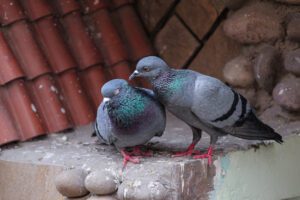
Moment of tenderness between a pair of pigeons
The researchers took blood samples from 185 healthy Bronx children and found that seven out of ten of those over the age of five, and 56 percent younger than five, were infected by the fungus.
Expert say the airborne fungus – which remains until adulthood – may be an underlying cause of many mysterious cases of vomiting, fever and lethargy.
“We were surprised by the number of children exposed to this fungus,” said Dr. David Goldman, and assistant professor of pediatrics at the medical school.
“It’s all over because pigeons are common in cities all over the world,” Goldman said.
The infection, which also can be caused by parrots, canaries and other birds, can be treated with anti-fungal medications.
Cryptococcus neoforman enters the body through the lungs and spreads to other tissues and organs, especially the brain.
It is normally KO’d by the body’s natural defenses, but in people with weakened immune systems, like those with AIDS and cancer, the fungus can cause meningitis, a brain infection that is often fatal.
Pigeon Patrol Products & Services is the leading manufacturer and distributor of bird deterrent (control) products in Canada. Pigeon Patrol products have solved pest bird problems in industrial, commercial, and residential settings since 2000, by using safe and humane bird deterrents with only bird and animal -friendly solutions. At Pigeon Patrol, we manufacture and offer a variety of bird deterrents, ranging from Ultra-flex Bird Spikes with UV protection, Bird Netting, 4-S Bird Gel and the best Ultrasonic and audible sound devices on the market today.
Canada’s top wholesaler for bird deterrent products for twelve consecutive years.
Contact us at 1- 877– 4– NO-BIRD, (604) 585-9279 or visit our website at https://www.pigeonpatrol.ca/
Bird Gone, Pigeon Gone, Pigeon problems, pigeon spikes, 1-877-4NO-BIRD, 4-S Gel, Bird Control, Pigeon Control, bird repellent, Bird Spikes, sonic bird repellent, stainless steel bird spikes, bird spikes Vancouver, Ultra Sonic Bird Control, Bird Netting, Plastic Bird Spikes, Canada bird spike deterrents, Pigeon Pests, B Gone Pigeon, Pigeon Patrol, pest controller, pest control operator, pest control technician, Pigeon Control Products, humane pigeon spikes, pigeon deterrents, pigeon traps, Pigeon repellents, Sound & Laser Deterrents, wildlife control, raccoon, skunk, squirrel deterrent, De-Fence Spikes, Dragons Den, Pigeon, Pigeon Patrol, Pigeons Roosting, Vancouver Pigeon Control, Bird Spikes, Bird Control, Bird Deterrent, Pigeon Deterrent, Surrey Pigeon Control, Pest, Seagull deterrent Vancouver Pigeon Blog, Birds Inside Home De-fence, Pigeon Nesting, Bird Droppings, Pigeon Dropping, woodpecker control, Keep The Birds Away, Birds/rats, seagull, pigeon, woodpecker, dove, sparrow, pidgeon control, pidgeon problem, pidgeon control, flying rats, pigeon Problems, bird netting, bird gel, bird spray, bird nails, bird guard, Pigeon control, Bird deterrents, Pigeon deterrents, Bird control, solutions, Pigeon prevention, Pigeon repellent, Bird proofing, Pest bird management, Pigeon spikes, Bird netting, Humane bird control, Bird exclusion, Urban bird control, Anti-roosting devices, Pigeon removal, Bird barriers

by Pigeon Patrol | Sep 25, 2024 | Bird Netting, Pigeon Control, Pigeon Droppings, Pigeon Patrol's Services
Fires were caused by a mouse chewing wires, a toilet roll being microwaved and a pigeon with a cigarette
A pigeon dropping a discarded cigarette down a chimney was among the most unusual causes of London fires in 2013, the city’s fire brigade has revealed.
Researchers studied 2,000 incidents in the capital in a bid to highlight the importance of fire safety.
Another case saw a fire caused by a dog hitting a toaster’s controls as it leapt on a worktop to reach food
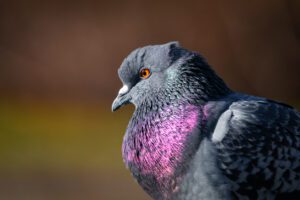
Close-up of a Pigeon at a Vancouver Island park.
.
London Fire Brigade (LFB) investigator Charlie Pugsley said he had seen some “weird and wonderful” things this year.
He added that even the strangest fire could have been prevented by taking simple fire safety precautions.
Other cases which highlighted the more unusual causes of fire included a teenage boy lighting a can of deodorant he had just used on himself ahead of his first date.
The LFB also attended fires started by someone putting a toilet roll which dropped down the loo into a microwave to dry it out and by a mouse eating through the wiring in the back of a fridge freezer.
Mr Pugsley said people should not use microwaves to dry out clothes or other items.
He added that candles should not be left unattended and mirrors and glass, which reflect the sun’s rays, needed to be kept away from flammable objects.
Pigeon Patrol
Pigeon Patrol Products & Services is the leading manufacturer and distributor of bird deterrent (control) products in Canada. Pigeon Patrol products have solved pest bird problems in industrial, commercial, and residential settings since 2000, by using safe and humane bird deterrents with only bird and animal -friendly solutions. At Pigeon Patrol, we manufacture and offer a variety of bird deterrents, ranging from Ultra-flex Bird Spikes with UV protection, Bird Netting, 4-S Bird Gel and the best Ultrasonic and audible sound devices on the market today.
Canada’s top wholesaler for bird deterrent products for twelve consecutive years.
Contact us at 1- 877– 4– NO-BIRD, (604) 585-9279 or visit our website at https://www.pigeonpatrol.ca/
Bird Gone, Pigeon Gone, Pigeon problems, pigeon spikes, 1-877-4NO-BIRD, 4-S Gel, Bird Control, Pigeon Control, bird repellent, Bird Spikes, sonic bird repellent, stainless steel bird spikes, bird spikes Vancouver, Ultra Sonic Bird Control, Bird Netting, Plastic Bird Spikes, Canada bird spike deterrents, Pigeon Pests, B Gone Pigeon, Pigeon Patrol, pest controller, pest control operator, pest control technician, Pigeon Control Products, humane pigeon spikes, pigeon deterrents, pigeon traps, Pigeon repellents, Sound & Laser Deterrents, wildlife control, raccoon, skunk, squirrel deterrent, De-Fence Spikes, Dragons Den, Pigeon, Pigeon Patrol, Pigeons Roosting, Vancouver Pigeon Control, Bird Spikes, Bird Control, Bird Deterrent, Pigeon Deterrent, Surrey Pigeon Control, Pest, Seagull deterrent Vancouver Pigeon Blog, Birds Inside Home De-fence, Pigeon Nesting, Bird Droppings, Pigeon Dropping, woodpecker control, Keep The Birds Away, Birds/rats, seagull, pigeon, woodpecker, dove, sparrow, pidgeon control, pidgeon problem, pidgeon control, flying rats, pigeon Problems, bird netting, bird gel, bird spray, bird nails, bird guard, Pigeon control, Bird deterrents, Pigeon deterrents, Bird control, solutions, Pigeon prevention, Pigeon repellent, Bird proofing, Pest bird management, Pigeon spikes, Bird netting, Humane bird control, Bird exclusion, Urban bird control, Anti-roosting devices, Pigeon removal, Bird barriers










